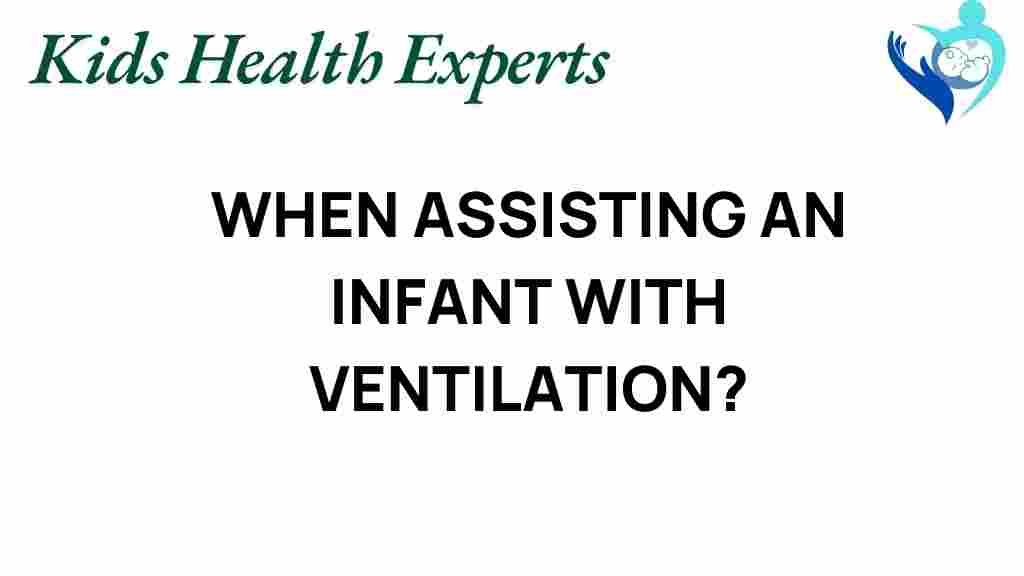Infant ventilation is a critical aspect of neonatal care, particularly for premature infants or those facing significant respiratory challenges. As caregivers, understanding the intricacies of respiratory support can make a profound difference in the health outcomes of these vulnerable patients. This guide aims to provide comprehensive caregiver guidance on infant ventilation, covering essential medical interventions, the challenges faced by premature infants, and key considerations for pediatric nursing.
Understanding Infant Ventilation
Infant ventilation refers to the methods and techniques used to provide respiratory support to newborns and infants who cannot breathe adequately on their own. This can be due to various reasons, including:
- Prematurity
- Congenital anomalies
- Infections
- Neuromuscular disorders
Effective ventilation is vital in neonatal care to prevent complications and support the infant’s overall health. Caregivers must be well-informed about the types of ventilation available and the techniques involved in each.
Types of Infant Ventilation
Infant ventilation can be categorized into various types, including:
- Continuous Positive Airway Pressure (CPAP): This method delivers a continuous flow of air to keep the airways open, making it easier for infants to breathe.
- Mechanical Ventilation: This involves the use of a machine to assist or replace spontaneous breathing. It can be invasive, requiring intubation, or non-invasive, using masks.
- High-Frequency Ventilation: A specialized form of mechanical ventilation that uses rapid, small breaths to provide effective gas exchange.
Each method has its indications, benefits, and risks, which caregivers should be familiar with to provide optimal support.
Step-by-Step Process for Implementing Infant Ventilation
When providing respiratory support, caregivers should follow a systematic approach to ensure the infant receives the best possible care. Here’s a step-by-step guide:
1. Assessment of the Infant
Begin with a thorough assessment of the infant’s respiratory status:
- Observe the respiratory rate and effort.
- Check for signs of respiratory distress (e.g., grunting, nasal flaring, retractions).
- Monitor oxygen saturation levels using pulse oximetry.
2. Determine the Need for Ventilation
If the infant shows signs of significant respiratory distress or hypoxia, it may be necessary to initiate ventilation. Consult with the neonatology team for guidance.
3. Choose the Appropriate Ventilation Method
Based on the infant’s specific condition, select the most suitable ventilation method:
- If the infant requires mild support, consider CPAP.
- For moderate to severe respiratory failure, mechanical ventilation might be necessary.
- In cases of specialized needs, such as severe lung disease, high-frequency ventilation may be indicated.
4. Initiate Ventilation
Once the method is chosen, carefully set up the equipment:
- Ensure all connections are secure and the ventilator settings are appropriate for the infant’s age and weight.
- Place the infant in a comfortable position to facilitate breathing.
- Monitor vital signs continuously during the initiation of ventilation.
5. Ongoing Monitoring and Adjustment
After initiating ventilation, continuous monitoring is essential:
- Regularly assess the infant’s breathing effort and responsiveness.
- Adjust ventilator settings based on blood gas analysis and clinical response.
- Collaborate with the healthcare team to evaluate the need for sedation or paralysis in some cases.
Troubleshooting Common Challenges
Even with the best practices in place, challenges may arise during infant ventilation. Here are some common issues and troubleshooting tips:
1. Equipment Malfunction
If the ventilator alarms, check the following:
- Ensure all connections are intact.
- Check for leaks in the ventilatory circuit.
- Verify power supply and settings on the machine.
2. Changes in Oxygen Saturation
If oxygen saturation drops:
- Reposition the infant to improve airway patency.
- Assess for any signs of obstruction or secretions.
- Consider increasing the oxygen concentration temporarily until the issue is resolved.
3. Signs of Overventilation
Watch for signs such as:
- Decreased heart rate
- Decreased blood pressure
- Hypercapnia (increased carbon dioxide levels)
If overventilation is suspected, consult with the healthcare team to adjust settings accordingly.
Conclusion
Infant ventilation is a complex yet vital aspect of neonatal care that requires careful consideration and continuous education for caregivers. By understanding the various methods of respiratory support, following a structured approach to implementation, and being prepared to troubleshoot common challenges, caregivers can significantly enhance the health outcomes of premature infants and those facing respiratory difficulties.
For more resources on pediatric nursing and neonatal care, consider visiting this helpful guide for additional information. Remember, your role as a caregiver is crucial in navigating the health challenges these infants face. Stay informed, remain vigilant, and always seek guidance from your healthcare team when needed.
Through effective communication and collaboration with healthcare professionals, caregivers can ensure that infants receive the highest quality of care during critical moments in their lives.
This article is in the category Care and created by KidsHealthExperts Team
